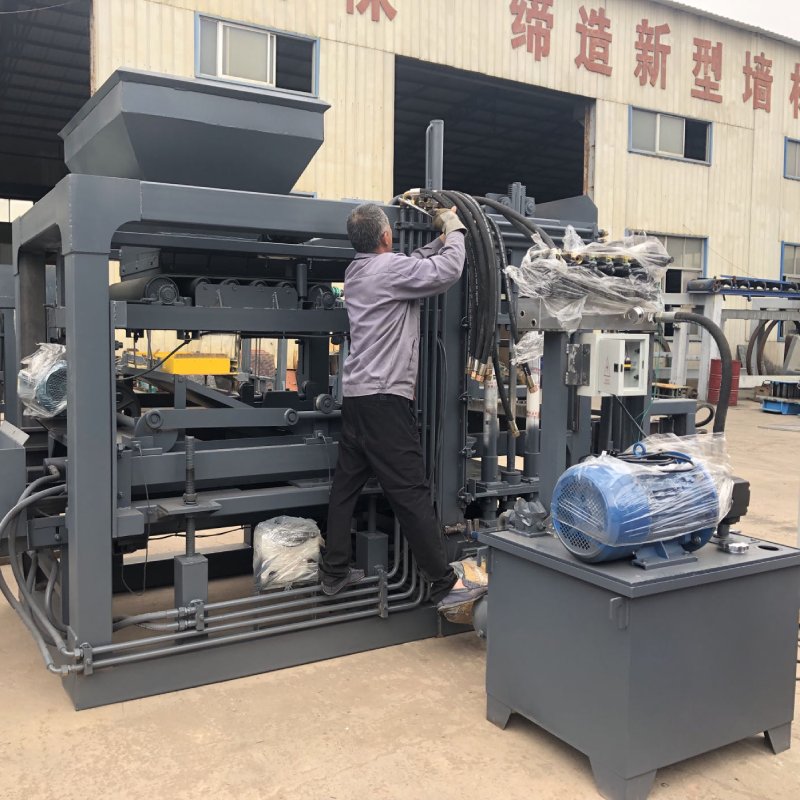
Image source Aiwei Block Machine
Discover the Power of Automated Brick Making Machinery
Revolutionizing Construction Through Automation and Efficiency
In the ever-evolving landscape of construction, technological advancements have consistently reshaped the way we build, making processes more efficient, sustainable, and innovative. Among these advancements, the rise of automated brick making machinery stands as a remarkable testament to human ingenuity. This article embarks on a journey to uncover the transformative power of automated brick making machinery, exploring its origins, mechanics, benefits, and the profound impact it is having on the construction industry.
I. The Genesis of Automated Brick Making Machinery
The history of brick production is deeply intertwined with human civilization itself. From the mud bricks of ancient Mesopotamia to the kiln-fired bricks of the industrial revolution, the art of brick making has evolved over millennia. However, the dawn of automation has ushered in a new era, one where machines seamlessly orchestrate the intricate dance of raw materials, molds, and kilns.
The roots of automated brick making machinery can be traced back to the early 20th century, with the introduction of mechanized processes that reduced manual labor and increased production efficiency. As technology advanced, these machines evolved from basic mechanical devices to sophisticated automated systems, capable of overseeing every facet of brick production.
II. Unveiling the Mechanics of Automation
At the heart of automated brick making machinery lies a symphony of mechanics, electronics, and precision engineering. These machines are designed to perform a series of tasks with minimal human intervention, resulting in a streamlined and efficient brick manufacturing process.
a) Raw Material Preparation: The process begins with the careful mixing of raw materials, usually clay and other additives, to create a homogenous mixture. Automated machinery precisely measures and blends these ingredients, ensuring consistency and quality in every batch.
b) Molding and Shaping: Once the raw material is prepared, automated machines use molds to shape the clay into uniform bricks. These molds can be customized to create a wide variety of brick sizes and shapes, allowing for architectural creativity and flexibility.
c) Drying and Curing: The freshly molded bricks are then subjected to a controlled drying and curing process. Automated systems manage temperature and humidity levels, ensuring optimal conditions for the bricks to attain their desired strength and durability.
d) Quality Control: Automation extends to quality control, where sensors and cameras are employed to monitor each brick’s characteristics, such as dimensions, color, and surface texture. Defective bricks can be identified and removed from the production line, ensuring that only high-quality products reach the market.
III. The Benefits of Automation in Brick Making
The integration of automated brick making machinery into the construction industry brings forth a myriad of benefits that encompass efficiency, quality, sustainability, and design versatility.
a) Enhanced Efficiency: Automation significantly accelerates the brick production process. These machines can work around the clock, producing a vast quantity of bricks in a fraction of the time it would take using manual methods. This efficiency translates to shorter project timelines and reduced labor costs.
b) Consistent Quality: The precision and repeatability of automated processes ensure that each brick adheres to strict quality standards. The elimination of human error leads to consistent dimensions, shapes, and textures, resulting in uniform and structurally sound buildings.
c) Sustainability: Automation can contribute to sustainable practices by optimizing resource utilization. Precise material measurements reduce wastage, and some automated systems even incorporate recycled materials into the production process, aligning with the construction industry’s growing emphasis on environmental responsibility.
d) Design Freedom: Automated brick making machinery empowers architects and designers to push the boundaries of creativity. The ability to produce custom-shaped bricks allows for the realization of intricate designs, textures, and patterns that were once challenging to achieve using traditional methods.
IV. Realizing Automation’s Impact: Case Studies
To illustrate the profound impact of automated brick making machinery, let us delve into two real-world case studies that showcase its capabilities in action.
a) Architectural Marvel: In a bustling urban center, a futuristic cultural center stands as an architectural marvel. The building’s distinctive facade is composed of uniquely shaped and textured bricks, a testament to the versatility of automated brick making machinery. These bricks, intricately designed and precisely manufactured, seamlessly interlock to create an awe-inspiring visual spectacle that captivates all who behold it.
b) Rapid Affordable Housing: In a developing region grappling with housing shortages, a groundbreaking affordable housing project is underway. Automated brick making machinery plays a pivotal role, producing standardized yet customizable bricks at an unprecedented rate. The resulting structures not only offer a solution to the housing crisis but also showcase the potential of automation to address pressing societal challenges.
V. Overcoming Challenges and Paving the Future
While automated brick making machinery offers a plethora of benefits, its adoption is not without challenges. Initial investment costs, the need for skilled technicians, and the integration of automation within existing construction workflows require careful consideration. However, as technology continues to advance, these challenges can be overcome through strategic planning, training, and collaboration.
The future of automated brick making machinery holds exciting possibilities. Continued research and development may lead to even more sophisticated systems, incorporating advanced sensors, artificial intelligence, and data analytics. As automation becomes increasingly intertwined with construction processes, the industry is poised to enter a new era of efficiency, quality, and sustainability.
VI. Conclusion: Pioneering the Path Forward
Automated brick making machinery stands as a beacon of innovation, illuminating the path forward for the construction industry. Its ability to blend tradition with technology, ushering in a new age of efficiency, precision, and design flexibility, holds the promise of reshaping how we build our world. As we bear witness to the transformative power of automation in brick making, we glimpse a future where buildings are not merely structures but living testimonies to human creativity, fueled by the remarkable synergy between automation and craftsmanship.
